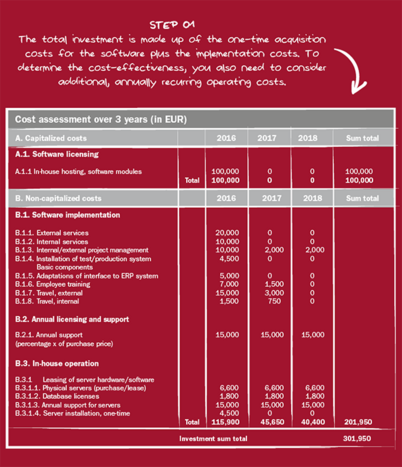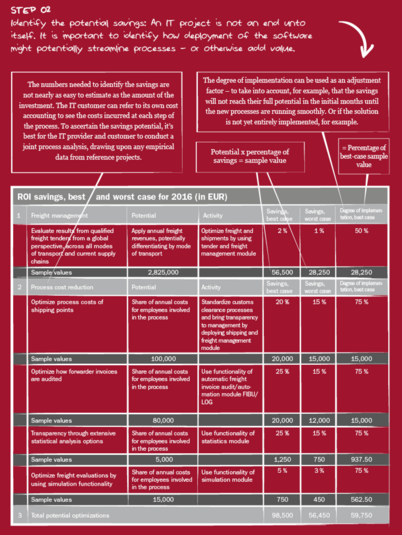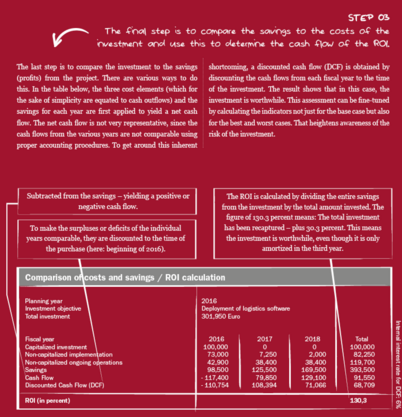
ROI of IT projects: 3-step calculation example
Investment in IT is crucial in today’s dynamic markets. But you need the ROI for budget approvals. How? Take a look at this 3-step calculation example.

Investment in IT is crucial in today’s dynamic markets. But you need the ROI for budget approvals. How? Take a look at this 3-step calculation example.
There is so much going on these days – from technological advances and globalization to new competitive environments and various, global security concerns. The right investments are crucial. And to get your budget approved, typically, you will need the ROI.
So without further ado, I will share this actual and highly useful ROI calculation example with you. It was set up by Rainer Hackstein, one of our experienced supply chain consultants at AEB. Rainer emphasized that there are several ways of calculating an ROI – and our version demonstrates just one of the possible ways to do it.
The following example is based on a multinational corporation that is implementing a new software solution. The area of IT deployment is logistics – for procurement and distribution.
Calculating one-time and recurring costs, tallying up the potential savings, and comparing the numbers: this is how you find out whether your IT project will be profitable. Let's guide you through it step by step.
To calculate the invested capital, you must first determine the investment amount subject to capitalization. This is outlined in the following table on the right (item A). It includes the costs of licensing the software, for example.
The investment amount subject to capitalization can also be zero. This is the case with a leased solution, for example, for which annual or monthly payments have been negotiated. Such payments would then be included as annual licensing costs in the cost assessment under item B.2.
Another major category is the implementation costs (item B.1): this includes costs for internal and external services, project management, software installation, the adaptation of interfaces, and training costs.
The third category is the annual operating costs (item B.3): examples include the support costs for the software (typically a defined percentage of the purchase price) and hardware, leasing costs for servers, and costs for database licenses.

Getting together all cost components is hard work. It’s good advice to work with the quotes submitted by providers. Nevertheless, it is common for implementation costs in particular to get out of hand. The primary risk of cost deviations stems from change requests in the middle of a project or misunderstandings in the definition phase. Most risks can be managed through strict project management. But some companies still factor in a lump-sum risk premium when calculating costs to be safe.
It is harder to estimate the savings – or the profit, or the value that the IT investment is supposed to generate. Such estimates are highly case-specific, of course. In all likelihood, however, the benefit of implementing logistics software lies in improved processes and the automation of manual tasks. Using software to manage automated processes, and replace manual verification, research, searches, and data entry.

Best for last, here comes the easiest step of all three: the comparison of cost and savings. And hopefully, it returns with a good result for your planned IT investment.

And that’s all it!
I personally find it rather useful to have examples to look at. If you feel the same and are currently preparing an IT business case, I hope this ROI calculation example comes in handy. I wish you success for your business case and (hopefully) for the upcoming IT implementation, too.
Digitizing global trade and logistics processes with ROI: AEB solutions overview